Sheep producer sentiment rebounds with improved seasonal outlook and commodity prices
Key points
- Survey results indicate that sentiment among Australian sheepmeat producers has increased 84 points over the past twelve months
- Producers across Australia are equally split between wanting to increase or decrease their flocks
- Prime lambs have overtaken Merinos within the 27m lambs reported on-hand by producers
Australian sheep producers’ confidence has jumped substantially this quarter, riding on the back of improved prices.
According to the latest Sheep Producer Intentions Survey (SPIS) released by Meat & Livestock Australia (MLA) and Australian Wool Innovation (AWI), sheep producers are buoyed by better prices for lamb and mutton and improving seasonal conditions in some states.
Producer net sentiment for the sheepmeat sector has lifted from -42 points in October 2023, to +42 points in October 2024.
All states other than Western Australia reported a positive outlook for the sheepmeat sector, with New South Wales (+55), Victoria (+52) and Queensland (+41) reporting the highest numbers.
Western Australian producers, who face a series of challenges including the cessation of live sheep exports, tough market conditions and dry season conditions, reported a sentiment figure of -2 points, although this is a 69-point increase compared to the 2023 figure.
While challenges remain for WA producers, support is being provided through the Australian Government’s recent assistance package. The $3 million allocated to MLA will fund initiatives such as extending the successful ‘Lambassador’ program and developing digital education tools, aimed at promoting Australian sheepmeat and creating new market opportunities.
According to Senior Market Analyst at MLA, Erin Lukey, this edition of the SPIS had the largest response rate ever, collecting 2,579 producer responses, representing 10% of sheep producers across the country.
“This gives us a strong indicator on the state of the industry and describes producers’ intentions for the year ahead,” Ms Lukey said.
“This edition of the survey focuses on lambing intentions and whether producers plan to grow, maintain or reduce their flock sizes.
“Nearly equal proportions of producers are intending to increase (40%) or decrease their flock (39%). This has shifted from last year’s survey, when more producers were looking to decrease their flock.
“The reasons why depend on which state you live in. Western Australian and South Australian producers, who have had drier weather than the eastern states, were more likely to want to reduce their flocks at 51% and 49% respectfully.
“47% of NSW producers indicated a desire to grow their flocks, with the most common reason being an expectation of higher lamb prices in 2025.”
Analysis of the forecast change in the number of lambs suggests an expected reduction of approximately 250,000 lambs of the estimated 2024 flock size (equating to a forecast decrease of 1% on 2024).
“This result highlights the importance of considering the reported changes in flock size rather than just producers’ disposition to change. Differing conditions across states will impact regional flock sizes, but also the intentions of different sized enterprises. Growth in the NSW flock has combatted the climate driven decrease across other states, resulting in a level national flock.” Ms Lukey said.
This survey has also revealed changes in the lamb flock profile with prime lambs (38%) remaining above Merinos (35%) within the 27-million-strong lambs on hand. Merinos fell from 37% to 35% over the past year and shedding lambs lifted from 5% to 8% of the flock.
“Reasons as to why include a struggle to access labour for shearing, rising input costs and poor wool prices,” Ms Lukey said.
The Sheep Producer Intentions Survey was designed by MLA and AWI to support the industry with reliable data and is used by MLA and the Australian Bureau of Statistics (ABS). It is one of the inputs into the MLA sheepmeat industry forecasting models.
To view the full results please visit: Sheep Producer Intentions Survey: October



